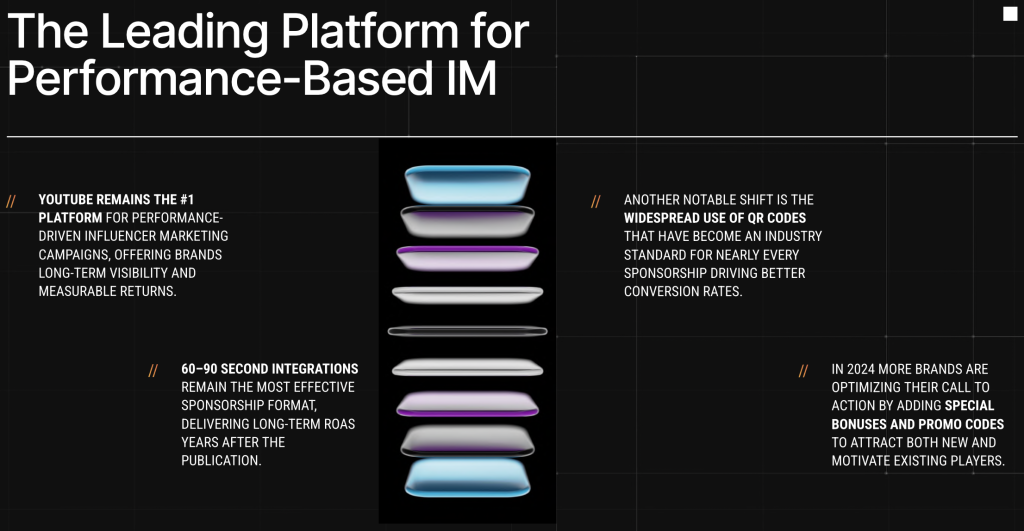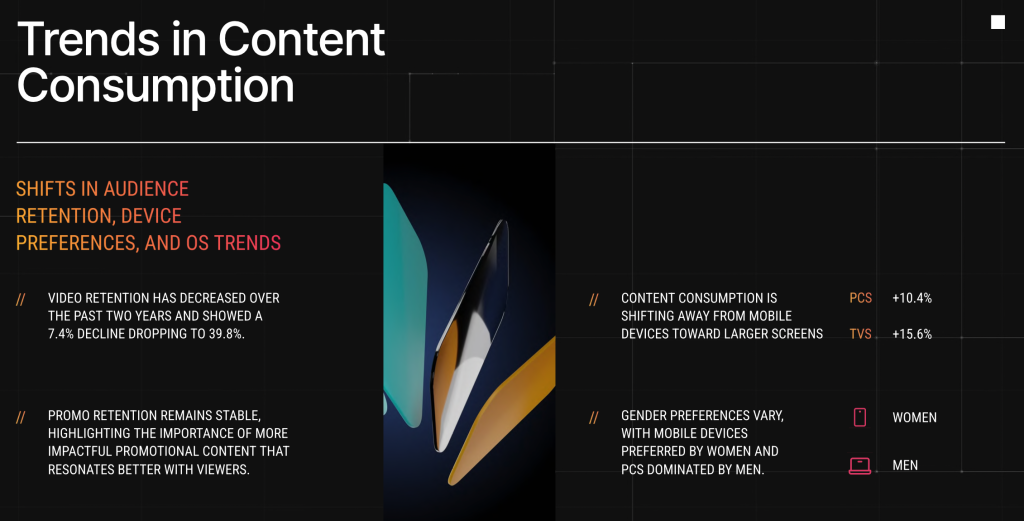A new industry report reveals how the world’s most successful mobile games use YouTube creators to drive user growth, engagement, and revenue.
Based on the activity of the top 200 grossing mobile games in the U.S., the study maps out current strategies, ad spends, and the evolving role of influencer marketing in the gaming ecosystem.
1. The Rise of Influencer Marketing in Gaming
In 2024, one in three top-grossing mobile games integrated influencer marketing into their strategy. YouTube remains the dominant platform for performance-driven campaigns, thanks to its measurable results, long-term visibility, and direct connection to highly engaged gaming audiences.
RPG and MMORPG titles stand out as the most active advertisers in this field, accounting for 58% of total influencer campaigns. Games such as Raid: Shadow Legends, Honkai: Star Rail, and AFK Journey continue to use creator collaborations as a core component of user acquisition and retention.
Other genres like action, strategy, and casual games follow closely behind, while social casino titles have emerged as one of the fastest-growing verticals, leveraging influencer marketing to reach new audiences through both gaming and lifestyle creators.
2. Spending and Campaign Structures
The report highlights a clear evolution in how game publishers allocate their influencer budgets.
- Annual budgets range from $100K to $1.1M per brand, depending on campaign format and objectives.
- Long-term partnerships show the best cost efficiency — averaging around $108K per campaign, with lower sponsorship costs per creator due to repeat collaborations.
- Seasonal and event-based campaigns are gaining momentum, tied to game anniversaries, updates, and in-game events.

These event-driven campaigns generate strong short-term engagement and buzz, while long-term activations deliver sustained ROI over time.
Interestingly, while MMORPG and strategy titles often maintain consistent year-round influencer activity, casual and social casino games prefer short bursts of high-impact collaborations to capture player attention around major updates or holidays.
3. Shifts in Creator Selection
Gaming brands are no longer limiting themselves to mega influencers. Instead, they’re adopting a hybrid strategy, blending macro, mid-tier, and niche creators to balance reach and authenticity.
For RPG and strategy genres, mid-tier influencers (100K–250K views per video) tend to deliver the most stable engagement rates. FPS and tactical games often work with smaller, highly specialized creators who have deep audience trust, even if total view counts are lower.
Casual games, by contrast, lean toward lifestyle and entertainment creators — bridging gaming content with broader pop culture to appeal to more diverse demographics.
Another interesting finding: almost 20% of influencers participated in two or more campaigns throughout the year, underscoring the growing importance of long-term partnerships and continuity in influencer marketing.
4. Platform and Format Trends
YouTube continues to lead as the most effective platform for gaming influencer marketing.
60–90 second integrations remain the dominant sponsorship format, providing measurable ROAS even months after publication.

At the same time, dedicated creator-generated channels — YouTube accounts launched specifically for a single game — are becoming more common. These “spin-off” channels enable long-form storytelling, community building, and organic content that feels more authentic than traditional ad spots.
The use of QR codes, bonuses, and promo codes within creator content has also become an industry norm, improving attribution and boosting conversion rates.
5. Content Consumption Is Changing
One of the most notable shifts highlighted in the report is how and where audiences watch gaming content.
Overall video retention has decreased by 7.4%, dropping to 39.8%, yet promotional retention has remained stable — indicating that well-integrated and creative brand placements still perform strongly.

Moreover, content consumption is gradually moving away from mobile devices toward PCs and TVs, suggesting that gaming influencer campaigns may soon prioritize multi-screen formats and immersive storytelling.
Gender preferences also differ: women still favor mobile viewing, while men are shifting toward desktop and large-screen consumption.
6. What to Expect in 2026
The upcoming year is shaping up to be a period of smarter, more immersive influencer marketing.
Publishers are expected to focus on:
- Short, high-impact creator activations centered on in-game events and limited-time offers
- Storytelling-driven collaborations that blend sponsored and organic content seamlessly
- Real-world activations and hybrid campaigns that bridge the gap between the virtual and physical gaming experience
- Dedicated creator partnerships aimed at building communities rather than just generating installs
With influencer marketing now integral to the success of top-grossing games, brands that combine data-driven insights with authentic creator relationships are set to define the next phase of growth for the global mobile gaming market.
🎮 Download the complete analysis:
👉 The State of Gaming Influencer Marketing 2025 (PDF)

